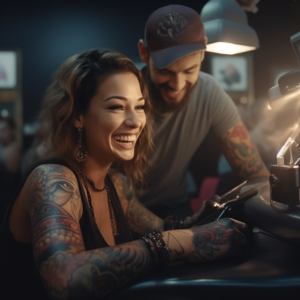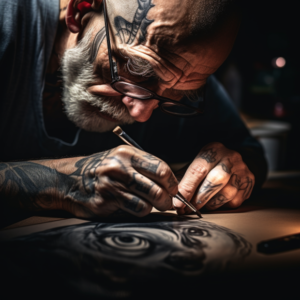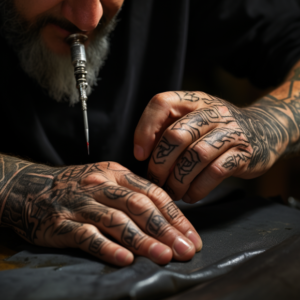When it comes to handpoke tattoos, ensuring safety and hygiene is paramount. As a method that involves manual tattooing without the use of a machine, it’s essential for both tattoo artists and clients to follow best practices to minimize risks and maintain a safe environment. Let’s explore the importance of handpoke tattoo safety, including hygiene measures and industry best practices.
1. Sterilization and Sanitization:
Tattoo artists should adhere to strict sterilization and sanitization procedures to prevent the transmission of infections. All tools, including needles, tattooing instruments, and work surfaces, should be thoroughly sterilized using autoclaves or other appropriate methods. Single-use needles should be properly disposed of after each use, and non-disposable instruments should undergo rigorous cleaning and disinfection.
2. Personal Protective Equipment (PPE):
Tattoo artists should wear appropriate personal protective equipment during the tattooing process. This includes disposable gloves, which should be changed regularly and whenever there is a risk of contamination. Wearing disposable aprons or smocks can also prevent cross-contamination.
3. Proper Hand Hygiene:
Hand hygiene is essential for both tattoo artists and clients. Before and after each tattoo session, artists should wash their hands thoroughly with soap and water. Hand sanitizers with at least 60% alcohol can be used in between hand washings.
4. Skin Preparation:
Tattoo artists must properly prepare the client’s skin before starting the tattoo. This involves cleaning the area with an appropriate antiseptic solution to reduce the risk of infection. Artists should avoid touching non-sterile surfaces or items during the tattooing process.
5. Safe Tattoo Ink:
Using high-quality, safe tattoo ink is crucial for handpoke tattoos. Artists should ensure that the ink they use meets safety standards and is free from harmful ingredients. Clients can inquire about the brand and composition of the ink being used to make informed decisions.
6. Aftercare Instructions:
After completing the handpoke tattoo, artists should provide clients with clear aftercare instructions. Proper aftercare is vital to prevent infections and ensure the tattoo heals well. Clients should be advised to keep the tattoo clean and moisturized while avoiding exposure to sun and water for a certain period.
7. Health and Safety Training:
Tattoo artists should undergo health and safety training to stay updated on the latest industry best practices. This includes courses on infection control, bloodborne pathogens, and safe tattooing techniques.
8. Licensing and Regulations:
Tattoo artists should operate within the framework of local health regulations and licensing requirements. Compliance with these regulations ensures that the tattoo studio maintains high standards of safety and hygiene.
By following these safety measures and best practices, both tattoo artists and clients can enjoy the handpoke tattooing experience with peace of mind. Prioritizing hygiene and safety not only protects against potential risks but also contributes to the reputation and professionalism of the handpoke tattoo industry.



